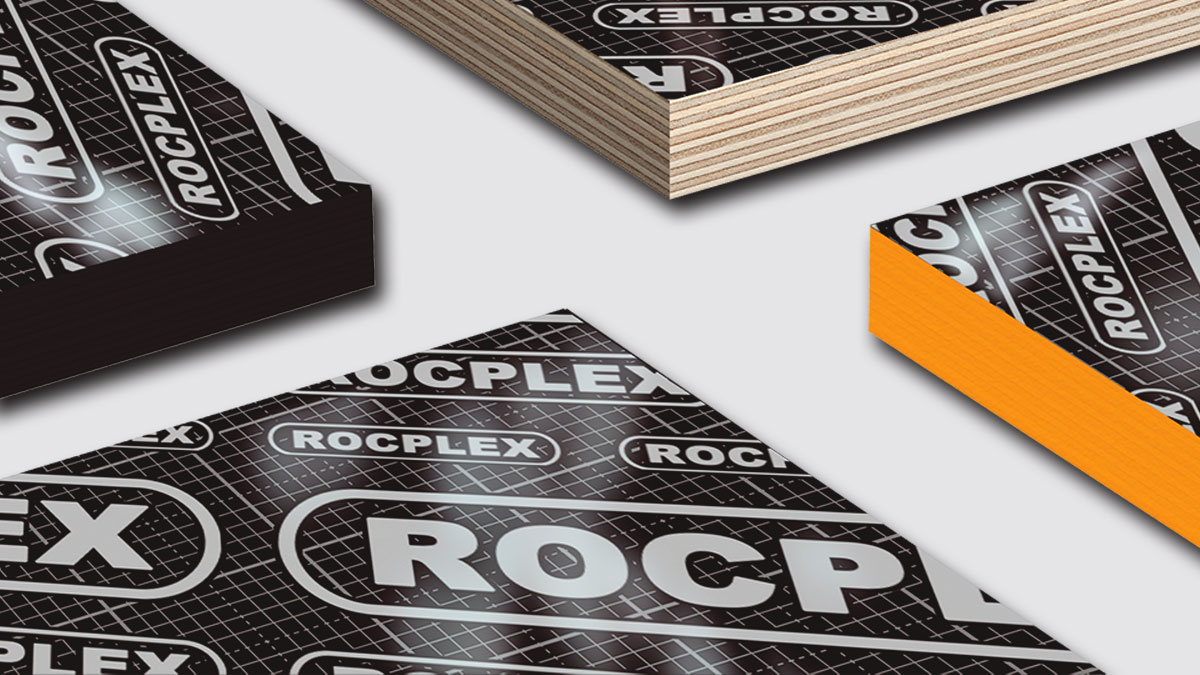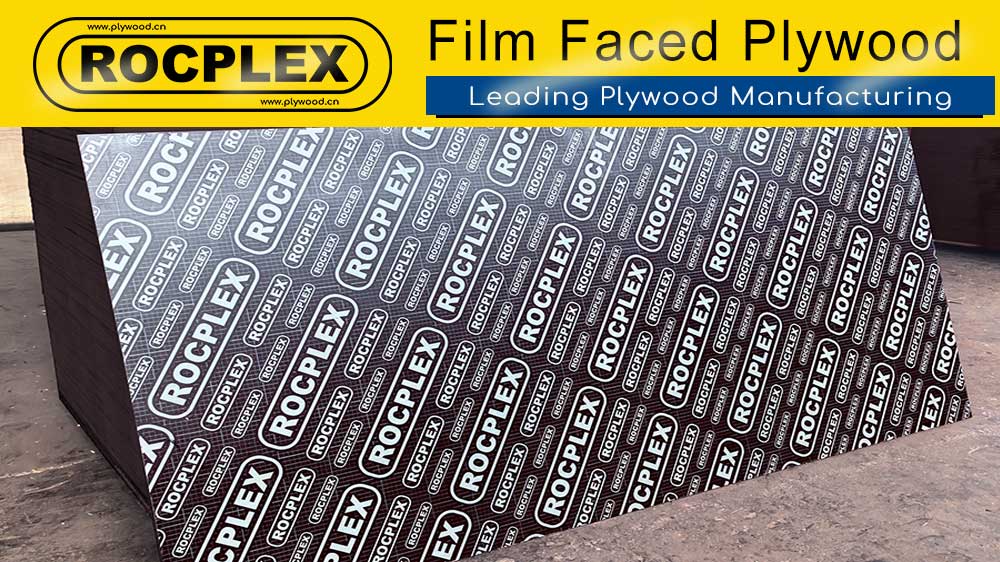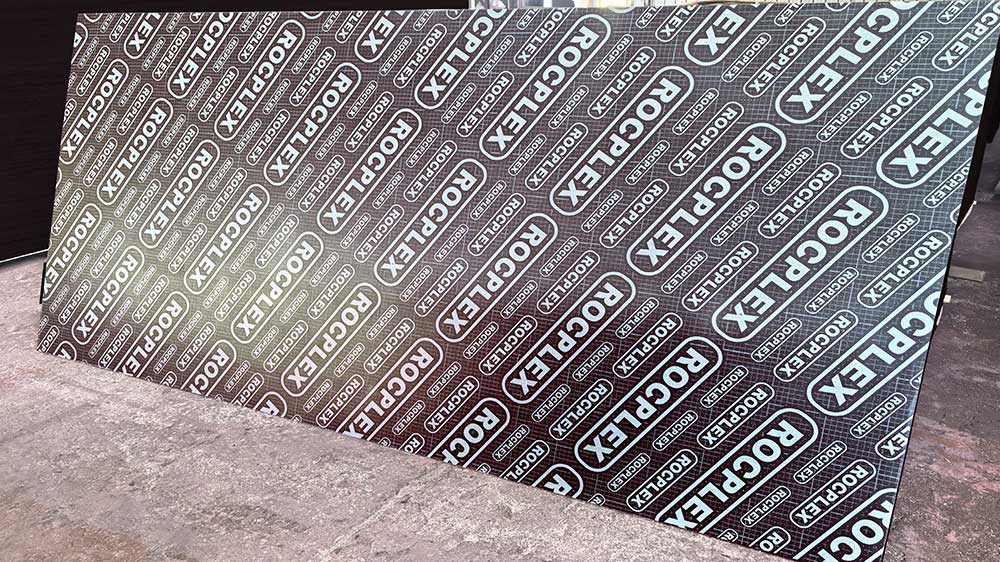What is Form Plywood?
Form plywood is a specialized type of plywood used primarily in the construction industry, particularly for concrete formwork. Unlike regular plywood, formply is designed to endure the stresses and wear associated with the molding of concrete. It is often used in projects such as building foundations, bridges, and high-rise buildings.
Form plywood has a smooth surface. This prevents concrete from sticking. It is easy to remove after setting. The material is also designed to withstand moisture, heavy loads, and harsh environmental conditions, ensuring longevity and durability. Form ply is commonly used in construction. It comes in several types. Phenolic plywood has a phenolic film coating. This adds strength and water resistance.
Key Benefits of Form Plywood
1. Durability for Heavy-duty Applications
The main advantage of form plywood is its ability to handle heavy-duty applications. Formwork plywood is designed to bear the weight of wet concrete and withstand the pressure during curing. The high strength of form plywood ensures that it can be reused multiple times in concrete formwork projects, making it a cost-effective choice for large-scale construction.
Whether it’s used for foundations, walls, or ceilings, formply is built to endure the tough conditions of construction sites. The material is tough enough to resist the weight and impact from large pours of concrete, preventing damage and ensuring the formwork stays intact throughout the process.
2. Water Resistance
One of the key characteristics of formply is its water resistance. Formwork plywood must be able to resist the effects of moisture and humidity, especially when used outdoors or in wet conditions. Plywood used in formwork applications is often treated with a water-resistant resin to protect the wood from absorbing moisture.
Phenolic plywood is a type of form plywood. It is known for excellent water resistance. This comes from its phenolic resin coating. The coating protects the plywood’s integrity. It keeps the material unaffected by moisture during concrete curing.
3. Smooth Surface for Clean Concrete Finish
For concrete formwork, a smooth and uniform surface is essential. Form plywood provides an ideal smooth finish, ensuring that the concrete doesn’t stick to the plywood during the setting process. This smooth surface also makes it easier to release the formwork after the concrete has cured, reducing the likelihood of damage to the concrete structure.
The film faced plywood version of formply offers an even more refined surface, ensuring that the concrete comes out with minimal imperfections and a polished appearance. This smooth finish is particularly beneficial for applications where the concrete’s surface will be visible.
4. Reusability
Another significant benefit of form plywood is its reusability. Form plywood is made to resist concrete stress and moisture. It can be reused many times in one or more projects. This makes it ideal for construction. Phenolic plywood is highly durable. Its coating increases strength and lifespan. It can often be reused 20 times or even more before replacement.
Reusability not only makes formply a cost-effective material but also helps in reducing waste, making it a more sustainable option for large construction projects.
Comparing Form Plywood to Other Types of Plywood
1. Form Plywood vs. Standard Plywood
The main difference between form plywood and regular plywood lies in structure, strength, and resistance to wear, moisture, and pressure. Regular plywood is used in general construction, furniture, or packaging. Form plywood is built for tough jobs, especially concrete pouring and heavy-duty formwork. Its added strength and moisture protection raise the cost. Still, it’s a valuable choice for long-term building needs.
Standard plywood may not have the strength required to hold up under the pressure of wet concrete or in environments exposed to moisture, which is why form plywood is the preferred choice in these situations.
2. Form Plywood vs. Marine Plywood
Marine plywood is made for wet, marine environments. It shares traits with form plywood like water resistance and strong durability. However, form plywood is made to handle concrete pressure and stress. Marine plywood is better for constant water contact. It works well in boats, docks, and other water-heavy construction uses. Each type serves a specific purpose in demanding conditions.
Form plywood is generally stronger than marine plywood, making it better suited for concrete formwork applications. Marine plywood, while resistant to water, lacks the structural strength needed for concrete casting.
3. Form Plywood vs. MDF (Medium-Density Fiberboard)
MDF is often used in furniture manufacturing and interior construction but lacks the strength and durability required for formwork applications. MDF does not resist water. It can swell or warp when wet. This makes it a poor choice for formwork. It is not suitable for use with concrete or moisture-heavy tasks. On the other hand, form plywood is made for strength. It handles heavy loads and moisture very well. That makes it much better for concrete and construction jobs.
For any heavy-duty or outdoor application, form plywood is the clear choice over MDF, as it offers strength, water resistance, and a smooth surface finish.
Factors Affecting the Cost of Form Plywood
1. Material Quality and Thickness
The cost of form plywood can vary based on the type of wood used, the resin treatment, and the thickness of the plywood. Thicker plywood generally costs more because it uses more raw material and requires more labor to manufacture. Additionally, higher-quality wood, such as hardwood, increases the cost.
Phenolic plywood, which is coated with a layer of phenolic resin, can also be more expensive due to the added durability and water resistance.
2. Brand and Manufacturer
The manufacturer and brand of formply can also affect the price. Well-known brands that produce high-quality plywood often sell at a premium, but the material’s performance and longevity can justify the higher cost in the long run.
Additionally, manufacturers who offer customizable options for film faced plywood or specialized coatings can charge more for their products.
3. Regional Availability and Demand
Local market conditions play a significant role in determining the price of form plywood. In regions where construction activity is high, demand for formply increases, potentially driving up prices. Conversely, areas with less construction activity may have lower prices, though shipping costs for materials may offset this advantage.
Form Plywood: Essential Benefits for Construction and Comparison
Form plywood is a key material for serious building work. It provides strength, durability, and water resistance. These features support successful concrete formwork. Though it costs more than standard plywood, the value is clear. Its smooth surface, reusability, and toughness in rough conditions make it a smart and lasting investment for construction projects.
By knowing the differences between form plywood and other plywood types, you can choose the best option. Consider material quality, thickness, and local supply. These factors help guide your choice. An informed decision ensures your project gets the right plywood for strong and lasting results. For those requiring high performance and reliability in demanding environments, form plywood—especially phenolic plywood—is the top choice.
Post time: Apr-12-2025




